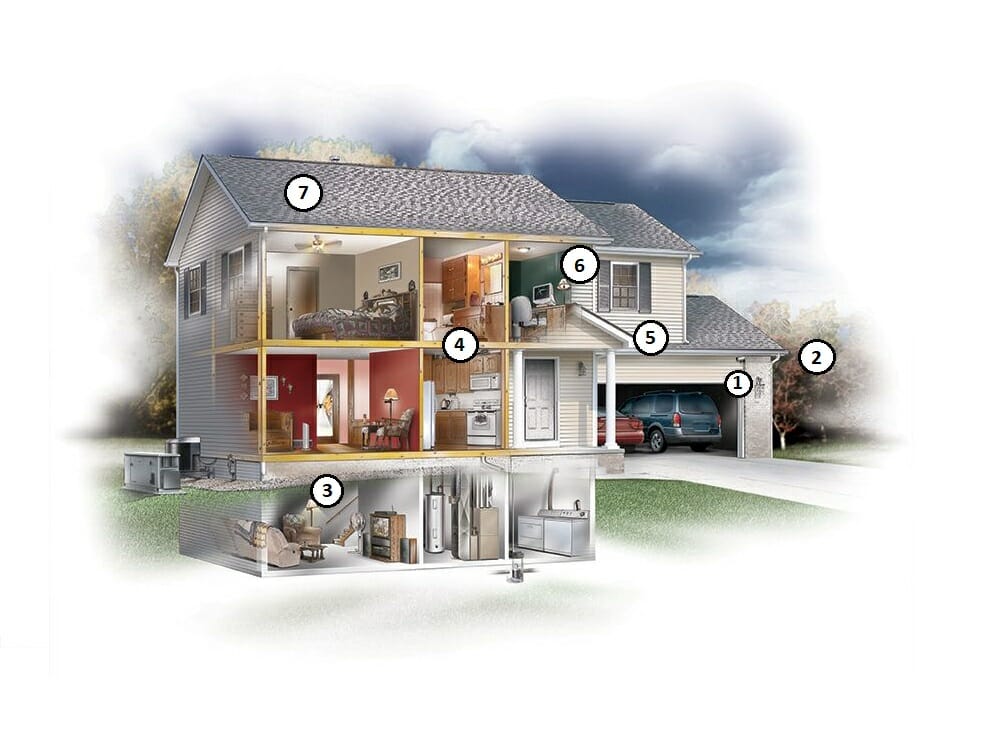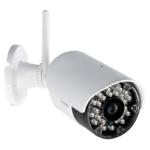Camera Placement – Residential
How to Choose Security Camera Locations for a Residential Home
We know that wireless cameras are not the best choice to put on your house.So that means we need to get a wire from your recording device (DVR) to the camera. Unless you are building a new home and running wires before the walls are finished, there are going to be some challenging places to run wire in your finished home. Let’s discuss how these challenges determine where your cameras will end up.
Quick Disclosure: This article will not be explaining to you how to run the wires, its purpose is to outline realistic expectations on where a camera can be placed.
Challenge #1: Internet Router Location
The first question I ask when meeting someone who wants cameras installed at their home is: Where is the router located? Most DVRs are not WiFi capable, they have to be plugged in to the router directly or a “network switch”. This makes the DVR much more reliable to view your cameras.
Most of the time, you’ll choose to have the DVR placed in the same room as the router. This means each camera has to get a wire from this chosen area to the camera location. Sometimes the DVR will be placed in a different area of the house, but only if a Cat5/6 computer wire is ran (or existing) between the DVR location and router.
Challenge #2: Wiring Paths
Since the DVR is the “Hub” to where all the wires are located, camera wires need to be ran here.
Often, the 2 best locations to run these wires are either the attic or basement or maybe a combination of both. Attics are a great place to run wires if it has open space. Often you want your camera high on the exterior of the house. Having those wires coming out of the attic helps reduce or eliminate any exposed wiring.
An open basement may be a viable solution, but if the wires go from the basement out to the exterior, you now have ground-level wires that can be vandalized. Using protective wire conduit can help prevent wire cutting. Using conduit can add additional expenses, including more labor.
If you have a second building where you would like a camera, there either needs to be existing low-voltage wiring or wires will need to be ran to the building. That involves either trenching underground, or aerial if it can be done properly. Just because you have electric already in the second building, don’t expect this to be a simple job.
Challenge #3: Camera Installation and Viewing
If you can get a wire to the camera location, it’s just a matter of installing the camera, right? Well, that depends. Is there a place to attach the camera? If you’re coming out of the attic, the soffit is usually the best place to install. Different building materials require different mounting measures to ensure your camera stays in place for a long time.
Next, make sure the camera will be able to see what you want. Do the cameras you are looking to purchase have a wide enough view? Is your house or external structures causing blind spots? Most residential surveillance cameras have a viewing angle between 65 to 90 degrees. There are few that offer a 180 degree range, but is gaining popularity. Rely on a professional installer to choose the right camera lens if you are not sure. Lastly, make sure your landscaping is not blocking the camera’s view now or will get large enough in the future to block the view.
RECAP:
- Don’t assume that exterior light means that a camera can be put there too. That electric wire for the light was ran when the house was being built.
- Don’t expect to see past these trees during the summertime!
- Finished basement ceiling? That just made running wires very difficult or impossible.
- If you have a two story home and your router is in the basement, there has to be some kind of wiring route from the basement to the attic.
- Is the shape of the house going to cause blind spots? You may need multiple cameras in the same area to ensure there are no blind spots.
- Is your router or an internet connection located just below the attic? Probably the best place to locate your DVR is beside the router and use the attic to run camera wires.
- Use an open attic whenever possible, it helps keep cameras and their wires in high & secure locations.

 Previous Post
Previous Post

